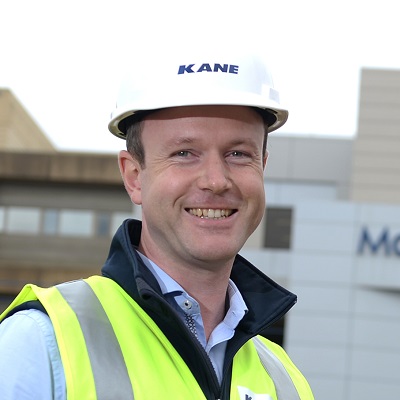Why is recognising men’s health week important?
‘I think it’s important for two reasons. Firstly, we know that men are far less likely to reach out to medical professionals when facing physical or mental health issues. Men are also less likely to engage and rely on their social networks. If you don’t talk about it with friends or medical professionals, then you’re behind the eight ball.
Secondly, and obviously connected to the above, the health of the average male is generally poorer than that of women in terms of life expectancy, accidents, cancer and heart disease, workplace fatalities, development and learning difficulties and suicides.
We all play a part in improving men’s health and ensuring they’re appropriately supported- that includes in the workplace, and it starts with us talking about it.’
What are your favourite ways to keep mentally and physically fit?
‘I love going to the gym and challenging myself. I’m naturally very competitive and I’ve always competed in sports.
For me, it’s daily workouts (always pushing myself as hard as I can) and eating healthy food, like less refined carbs and more meat and veggies. I also do the odd fasted day (or two) a week. I also love reading philosophy – particularly stoic philosophy.’
How do you unwind after a stressful day?
‘Hanging out with my son. He makes all stress disappear. Exercise. Having a yarn with my wife (if she’ll listen to my babble) and talking to mates.’
How does looking after yourself benefit your personal and work life?
‘Every action has a flow-on effect. If I choose to eat well, I’m more likely to exercise. If I exercise, I’m more likely to feel better mentally. If I feel better mentally, I’m more likely to have a better day at work and so on. Nothing we do is ever in isolation. It’s all connected.’
Would you encourage men to speak up about how they’re feeling?
‘Yes. Let’s put to bed the antiquated notion that men don’t discuss feelings. We should.’
How would you start a conversation with a man needing support?
‘If you know the person well enough, then I suggest catching up for a drink or dinner. Simply ask how they are doing, how are they finding the balance of work, life and kids and maybe open up yourself. Be honest about things you are struggling with as that will create the right environment for open and honest discussions.’
How would you encourage men to proactively take control of their own health?
‘I would first ask them to get really clear on the ‘why’, because if you don’t have a strong reason to do something, then you’ll give up at the first sign of struggle. Get really clear on why getting healthy is important to you. Make it compelling.
I would also encourage them to try mindfulness or meditation. Meditation, if practised consistently, can really help to bring you back to a calm and settled mindset. As the saying goes: 90 per cent of your problems are caused by your thoughts. If you can get a handle on those wandering thoughts, you’re halfway there.
I would encourage all men, no matter their age or level of fitness, to make time to prioritise exercise. Not only will you feel better, but your health will also improve, and it has the added benefit of connecting you with other people. Something us blokes do less and less of the older we get.
Join a gym that runs group classes, like HIIT or spin. You’re more likely to do the exercise if you’re part of a group. If gyms aren’t your thing, even making time to walk around the block each day is a great start. But remember, it all starts with the why.’
You can find resources and information about men’s health on the Healthy Male website.





